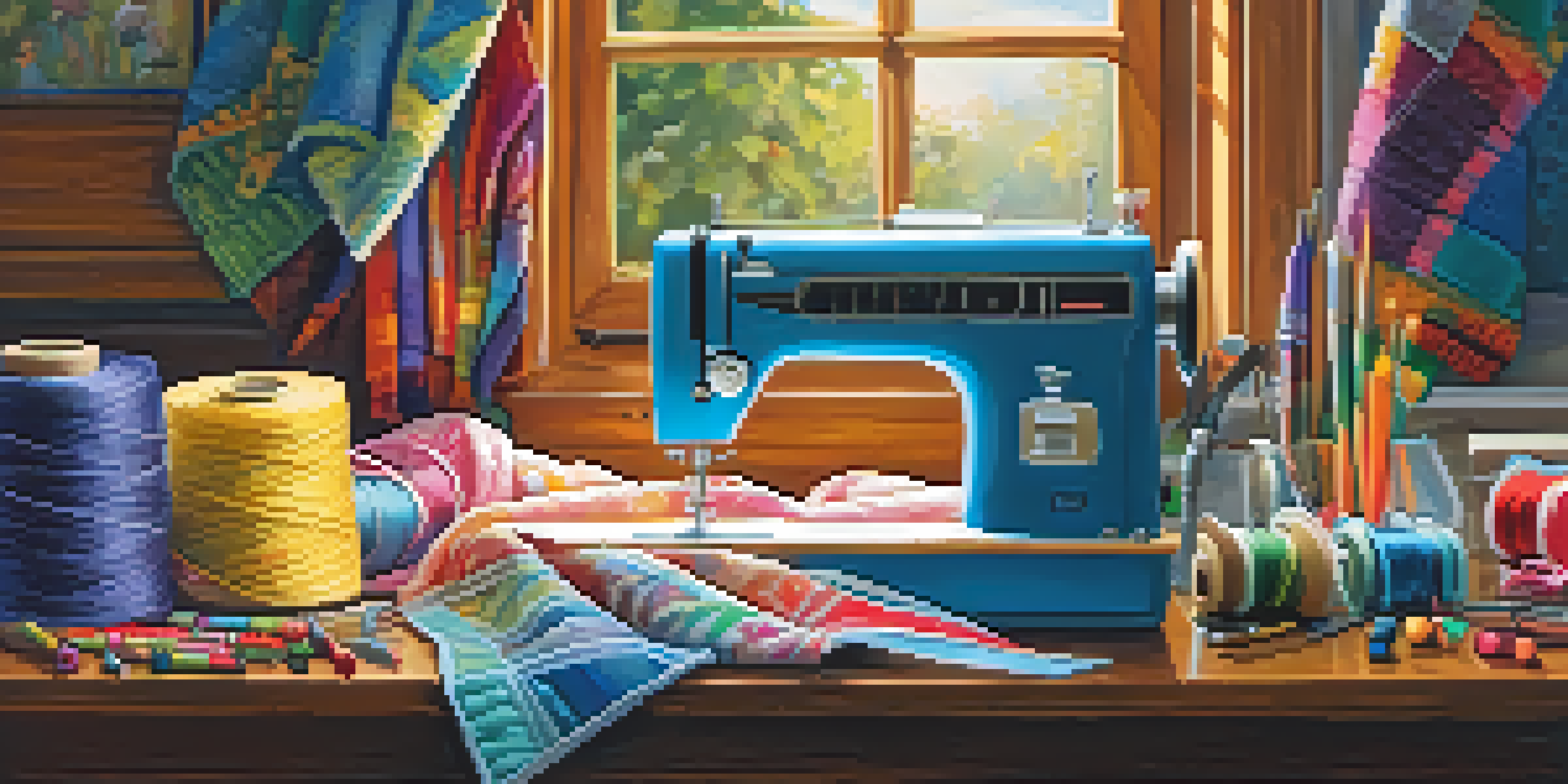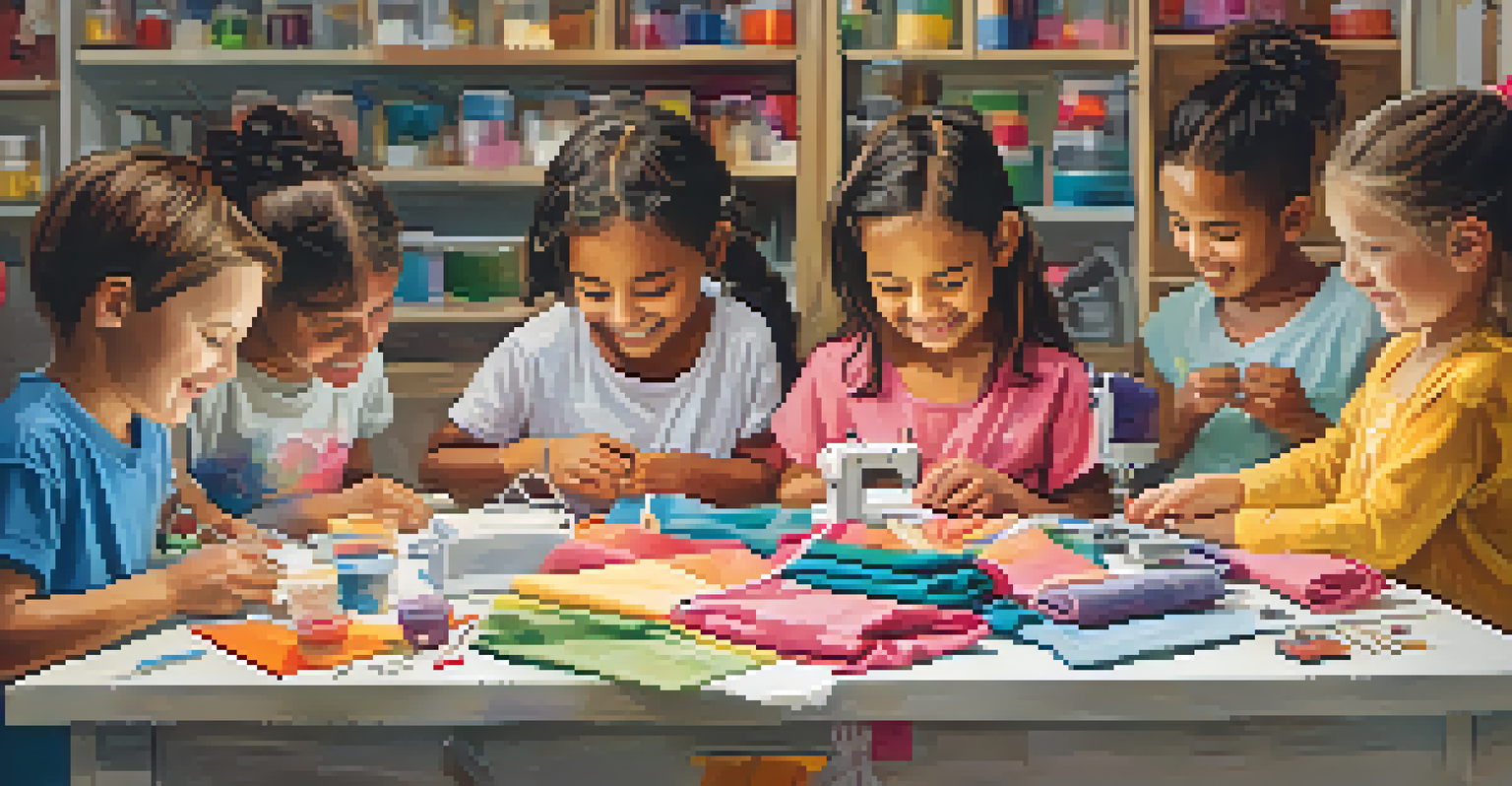Sewing for Kids: Fun Projects to Spark Creativity

Introduction to Sewing: A Creative Outlet for Kids
Sewing is more than just a hobby; it's a fantastic way for kids to express their creativity. Through sewing, children can create tangible items that showcase their unique personalities and ideas. Whether it’s a simple project like a pillowcase or a more complex item like a stuffed toy, sewing empowers kids to transform fabric into something special.
Sewing is a great way to express creativity and develop skills that will last a lifetime.
Moreover, sewing helps develop fine motor skills and hand-eye coordination. As they maneuver the needle and thread, kids enhance their dexterity and patience. This hands-on activity promotes a sense of accomplishment, boosting their confidence with each completed project.
Plus, sewing can be a wonderful bonding experience for families. Parents and children can work together on projects, sharing tips and techniques while enjoying quality time. This collaborative aspect makes sewing not just a learning opportunity but also a chance to strengthen relationships.
Essential Sewing Supplies for Beginners
Before diving into sewing, it's important to gather the right supplies. Basic tools include fabric, scissors, pins, a needle, and thread. For younger kids, safety scissors and child-friendly needles are great options to ensure safety while they learn.

Additionally, having a sewing machine can make the process more enjoyable and efficient, but it’s not essential for beginners. Hand sewing is a fantastic starting point that allows kids to grasp the basics without overwhelming them. A simple sewing kit with various colors of thread can also inspire creativity.
Sewing Sparks Creativity in Kids
Sewing allows children to express their individuality while creating tangible items that reflect their unique ideas.
Don’t forget about fabric! Choosing fun patterns or colors can make the project even more exciting. Encourage kids to pick their favorite fabrics, as this personal touch can ignite their interest and motivate them to start sewing.
Simple Sewing Projects to Get Started
Starting with simple projects can help kids gain confidence in their sewing abilities. One great beginner project is creating a fabric bookmark. All they need is a strip of fabric, some stitching, and a bit of creativity in decorating it.
The act of creating something with your hands can be incredibly empowering for children.
Another fun idea is making a drawstring bag. It’s practical and allows kids to practice sewing in straight lines while learning how to create a casing for the drawstring. This project also teaches them about function and design, as they can choose fabrics that reflect their personality.
Lastly, sewing a pillow cover can be a rewarding experience. Kids can select their favorite colors and patterns, and they’ll love having a personalized pillow on their bed. This project not only enhances their sewing skills but also gives them a sense of ownership over their space.
Encouraging Creativity Through Customization
One of the best parts of sewing is the opportunity for customization. Encourage kids to add their personal flair to each project. They can experiment with decorative stitches, patches, or even fabric paints to make their creations truly one-of-a-kind.
Customizing projects also invites kids to think critically about design and aesthetics. They’ll learn how to combine colors and shapes in ways that reflect their style. This can spark discussions about fashion, art, and even storytelling through their creations.
Essential Skills Developed Through Sewing
Engaging in sewing helps kids enhance fine motor skills, patience, and problem-solving abilities, contributing to their overall development.
Moreover, these customization options can lead to deeper engagement with the craft. When kids feel ownership over their projects, they are more likely to invest time and effort into finishing them. This sense of pride can fuel their passion for sewing and encourage them to take on more complex projects.
The Benefits of Sewing for Kids’ Development
Sewing isn't just a fun activity; it also plays a significant role in a child's development. As kids sew, they learn problem-solving skills by figuring out how to fix mistakes or improve their designs. This critical thinking is invaluable and translates into other areas of their lives.
Additionally, sewing teaches children about patience and perseverance. It’s not uncommon for projects to take time and effort, and learning to stick with a task until completion builds resilience. These skills are crucial as kids face challenges both in and out of the classroom.
Moreover, sewing can also introduce children to basic math concepts. Measuring fabric, counting stitches, and understanding patterns all require math skills. Thus, sewing becomes a fun way to reinforce what they learn in school while engaging in a creative outlet.
Exploring Different Sewing Techniques
As kids become more comfortable with sewing, introducing them to different techniques can expand their skills. For instance, they might learn how to sew buttons, create hems, or even try quilting. Each new technique adds depth to their sewing abilities and opens up a world of creative possibilities.
Teaching kids about different stitches—like straight, zigzag, and decorative stitches—can also enhance their projects. Each stitch serves a purpose and can change the look and feel of their creations. This exploration encourages experimentation and innovation in their sewing.
Custom Projects Boost Engagement
Encouraging kids to customize their sewing projects fosters deeper engagement and a sense of ownership, motivating them to explore more complex creations.
Moreover, by learning various techniques, kids can start to understand the role that sewing plays in different cultures and traditions. This can lead to discussions about textile arts around the world, enriching their appreciation for the craft and its history.
Hosting a Mini Sewing Workshop for Kids
A great way to get kids excited about sewing is by hosting a mini workshop. Gather a few friends, provide the necessary supplies, and choose a fun project that everyone can complete together. This collaborative environment can inspire creativity and foster friendships.
During the workshop, kids can share tips, help each other, and learn from one another. The social aspect of sewing can make the experience more enjoyable and less intimidating for beginners. Plus, they’ll get to show off their creations at the end!

To make it even more special, consider creating a mini fashion show where kids can display their finished projects. This celebration of their hard work can boost their confidence and encourage them to continue sewing, knowing they have a supportive community cheering them on.